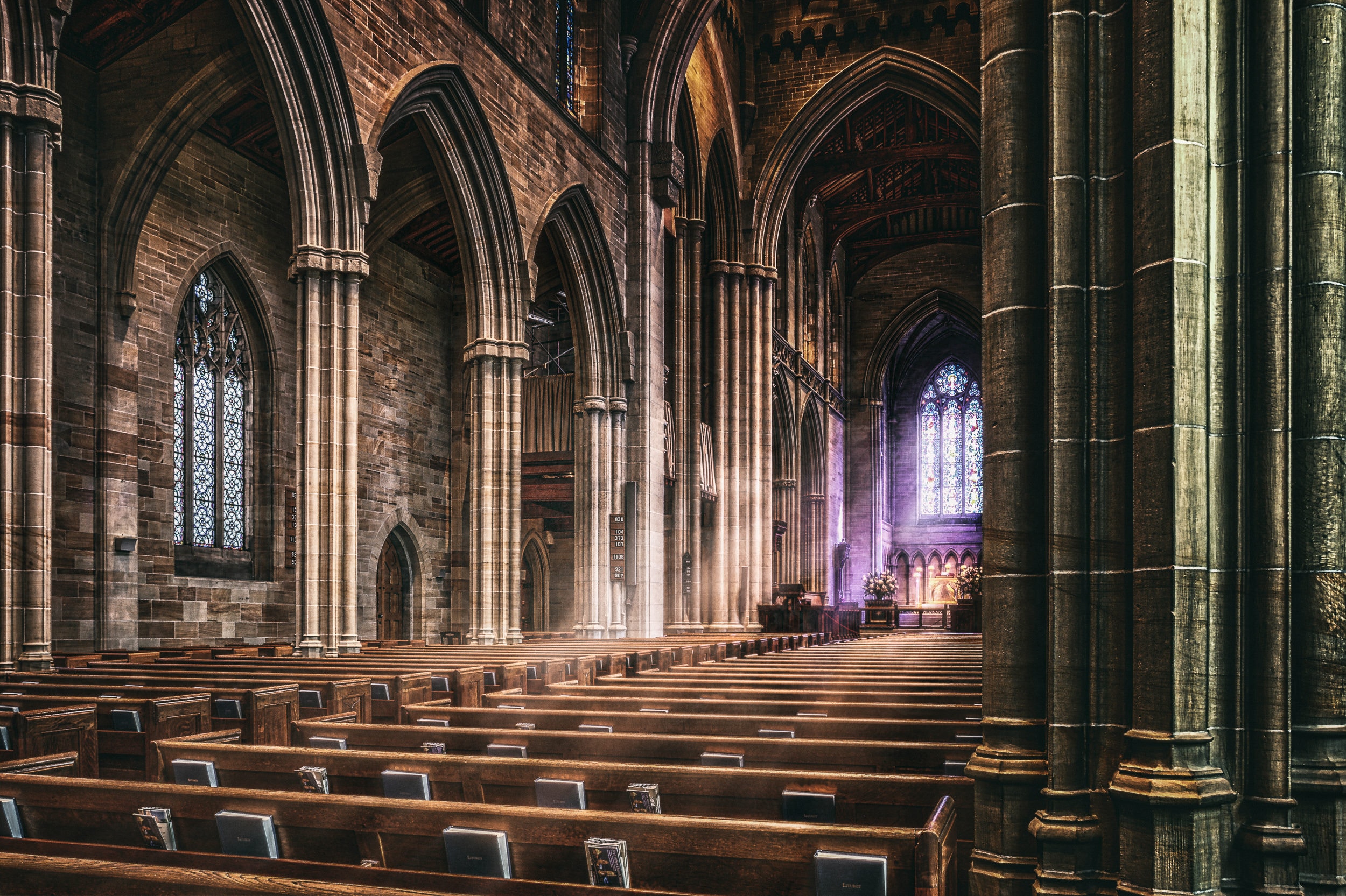Design plays a crucial role in creating an inviting and inspiring atmosphere within a church. A well-designed church can foster a sense of community, enhance worship experiences, and leave a lasting impression on visitors. Whether you are starting from scratch or looking to revamp your existing space, here are some design tips to transform your church into a place of beauty, comfort, and spiritual connection.
Create a Welcoming Foyer: The First Impression Matters
The foyer serves as the gateway to your church, making it the first point of contact for visitors. To create a welcoming atmosphere, focus on the following design elements:
Layout and Traffic Flow: Ensure that the foyer has an open and spacious layout, allowing people to move freely. Minimize clutter and create clear pathways to guide visitors toward the main sanctuary or gathering areas.
Lighting: Use warm and inviting lighting fixtures to create a cozy ambiance. Consider incorporating natural light through windows or skylights to establish a connection with the outside environment.
Seating and Gathering Spaces: Provide comfortable seating areas where individuals and groups can gather, chat, and connect. As seen on this website, church furniture includes everything from simple chairs and armchairs to dining tables. Consider incorporating cozy couches, armchairs, and coffee tables to create a relaxed and inviting atmosphere.
Information Center: Set up an information center or welcome desk where greeters can provide guidance and answer questions. Display brochures, maps, and other informational materials to help visitors navigate the church.
Enhance the Worship Space: Creating a Sacred Atmosphere
The sanctuary is the heart of any church, where congregants come together for worship, prayer, and reflection. To enhance the worship experience, pay attention to the following design aspects:
Altar and Chancel Area: Make the altar and chancel area visually appealing by using beautiful fabrics, meaningful artwork, and tasteful decorations. Consider incorporating symbols and imagery that hold significance within your faith tradition.
Sound and Acoustics: Invest in high-quality sound systems and acoustical treatments to ensure clear and balanced audio during services. Properly designed acoustics can enhance the experience of congregational singing and amplify spoken words.
Seating and Layout: Choose comfortable and ergonomic seating that encourages good posture and long-lasting comfort. Consider the sightlines from different seating positions to ensure everyone has a clear view of the stage or pulpit.
Multimedia Integration: Embrace technology by incorporating multimedia elements such as large screens, projectors, and sound systems for visual presentations, scripture readings, and worship songs. Ensure that these elements are seamlessly integrated into the design without overpowering the sacred atmosphere.
Create Functional and Versatile Spaces: Meeting the Needs of Your Community
Churches are not just places of worship; they are also community hubs that host a variety of activities and events. To cater to the diverse needs of your community, consider the following design tips:
Multi-Purpose Rooms: Design flexible spaces that can be easily transformed to accommodate different events, such as meetings, small group gatherings, children’s activities, and social events. Incorporate movable partitions or furniture to adapt the space as needed.
Children and Youth Areas: Create age-appropriate spaces that are inviting and engaging for children and youth. Use vibrant colors, playful decorations, and interactive elements to foster a sense of belonging and encourage participation.
Outdoor Spaces: If you have outdoor areas, consider designing welcoming and functional spaces where people can gather, relax, or hold outdoor events. Incorporate landscaping, seating, and shade to create inviting outdoor
Embrace Art and Symbolism: Inspiring Visual Elements
Art and symbolism can profoundly impact the spiritual experience within a church. By incorporating meaningful visual elements, you can create an atmosphere that stimulates reflection and deepens the connection to faith. Consider the following design strategies:
Stained Glass Windows: Install or restore stained glass windows that depict biblical scenes, religious symbols, or representations of your faith’s core values. The interplay of light and colors through stained glass can evoke a sense of awe and transcendence.
Sacred Art and Sculptures: Display sacred art and sculptures throughout the church to inspire contemplation and reflection. These artistic pieces can depict religious figures, important events, or abstract representations of spiritual concepts, allowing individuals to connect with their faith on a visual level.
Prayer and Meditation Spaces: Design dedicated areas within the church for quiet reflection, prayer, and meditation. Furnish these spaces with comfortable seating, soft lighting, and tranquil decor to create a serene atmosphere conducive to introspection and spiritual rejuvenation.
Enhance Environmental Sustainability: Caring for Creation
As stewards of the Earth, churches have an opportunity to lead by example in promoting environmental sustainability. By integrating eco-friendly design elements, you can demonstrate your commitment to caring for creation. Keep in mind these eco-conscious design tips:
Energy-Efficient Lighting: Replace traditional light fixtures with energy-efficient alternatives such as LED bulbs. Incorporate motion sensors or dimmers to optimize energy usage based on occupancy levels. Additionally, leverage natural lighting through skylights or large windows to reduce reliance on artificial lighting during daylight hours.
Sustainable Materials: Choose sustainable and responsibly sourced materials for construction, renovation, and furnishing projects. Opt for options like reclaimed wood, recycled materials, and low VOC (volatile organic compound) products to minimize environmental impact and promote indoor air quality.
Water Conservation: Install water-efficient fixtures such as low-flow toilets, faucets, and irrigation systems. Consider incorporating rainwater harvesting systems to collect and reuse water for landscaping or other non-potable purposes.
Prioritize Comfort and Accessibility: Inclusive Design
To ensure that your church is welcoming to all individuals, it’s crucial to prioritize comfort and accessibility in your design approach. Consider the following strategies to create an inclusive environment:
Ergonomic Seating: Choose ergonomic seating options that provide adequate support and comfort for individuals of all ages and abilities. Consider incorporating padded seating with lumbar support and ample legroom to accommodate diverse needs.
Assistive Technology: Install assistive listening devices and hearing loop systems to assist individuals with hearing impairments during services and events. Additionally, provide large-print materials and accessible digital resources to cater to individuals with visual impairments.
Thoughtful Wayfinding and Signage: Ensure that your church is easy to navigate by implementing clear and accessible wayfinding signage. Use contrasting colors, large fonts, and braille signage to assist individuals with visual impairments in locating different areas within the church.
By implementing these design tips, you can transform your church into a space that not only inspires worship but also fosters a sense of community, inclusivity, and environmental stewardship. Remember, the design of a church should reflect the values and beliefs of its congregation while creating a welcoming and engaging environment for all. Through intentional design choices, you can create a transformative space that nurtures spiritual growth and connection within your church community.


